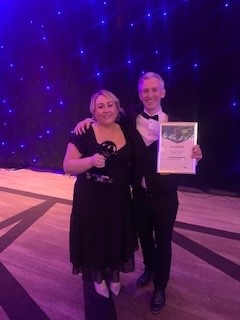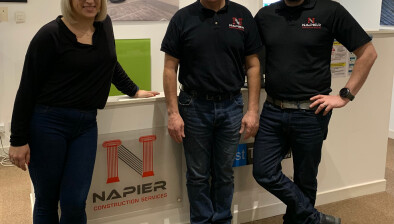Q&A: Scotland Excel’s New Build Framework

Sarah-Claire Dahlstrom and Graeme Sutherland
The recent procurement award season went extremely well for Scotland Excel’s New Build Framework - winning Scottish and national awards for ‘Best Procurement Delivery’, but also winning the ‘GO Excellence Award’ at the national final. We caught up with Graeme Sutherland and Sarah-Claire Dahlstrom from Scotland Excel’s construction team, to find out more about this hugely successful framework. They both shaped, implemented and have overseen the first generation of this multi-award-winning contract.
Q: What makes this framework so successful?
Graeme:
“From the very early stages of the framework’s development, we received meaningful intelligence from all levels of member stakeholders. This helped us build the full picture - from the long-term aspirations to real time challenges- to establish core objectives. Early engagement gave us both the time and resource to consider what was important and how to best to approach that through the framework.
“We talked to stakeholders extensively on all aspects of the framework- from the technical detail through to the softer elements, such as community benefits.
“Some of the more detailed discussions between councils on their approach to house building, I felt, served as a great hub for intelligence sharing. It enabled them to compare and contrast approaches. Some things were simply done differently because they were all previously considered separately, and some aspects were very deliberate relative to the uniqueness of a council. This helped us better understand where standardisation benefited and where options and flexibility served better, and it enabled us to shape that in a very collaborative way.
“I personally have been surprised by the rapid evolution of both members and contractors in respect of carbon friendly solutions. Many carbon friendly approaches, such as Passivhaus homes, appeared to be vague and niche at the time of implementing the framework. Now they appear as standard and common practice for members and contractors alike. Thankfully, the flexibility of our framework supported the evolution of specifications.”
Sarah-Claire
“A real positive for me was the engagement we had from the 11 funding councils and the buy in from them from outset. They helped us build the specification, the pricing structure, and because they were involved from start, we had a detailed insight into their needs and what they were buying. And that really helped us shape the framework.
“One of the key outcomes councils wanted was a quick and compliant route to market, which we were able to deliver for them. When we were developing the framework, we didn’t know then how different covid-19 was about to make things. But the way we structured the framework helped councils react promptly once the construction industry re-started post-lockdown, and they were able to make quicker call offs using our framework.
“Another positive for me, is seeing the ability the framework gives members to build net zero homes and implement Passivhaus.”
Q: Was anything particularly unique/innovative about the framework (and how did it turn out)?
Sarah-Claire
“Once we got our pricing structure in place to give us base prices, we then developed an easy-to-use cost analysis tool for our member to access when they wanted to scope out the cost of a project. The tool also works geographically too, so it gives accurate cost forecast not just for a project – but for a region too.
“Councils and housing associations can use the tool to create a house and a specification and the tool will give them a price that would be real at the time of award. They can look up different options and get instant feedback in relation to standards and performance against cost. This has been an extremely positive feature.”
Graeme
“The framework is very strong in localism and returning benefits back to local communities. This was reflected in the community benefits approach. They were very purposefully created so that those local communities spending through the framework were seeing the direct value from community benefits in return.
“This was also the first time Scotland Excel gave a requirement for framework suppliers to advertise any sub-contracting work associated with the framework, locally. And as a result, 58% of the framework’s total spend has reached local sub-contractors.”
Sarah-Claire
“There’s also a requirement on suppliers to engage with supported businesses and social enterprises and we delivered a workshop for suppliers with Social Security Scotland – outlining ways they could engage and sharing contact with them.”
Q: Are there other elements of the framework that have been particularly successful?
Sarah-Claire
“An area we’ve received positive feedback about is the ongoing engagement we have with contractors.
“Twice a year we give the framework suppliers forecasts of what the predicted pipeline of projects from members looks like. This helps suppliers plan ahead in terms of resourcing to get ready to bid. To produce the pipeline, we work with our members every few months to fill in a template.
“Our mobilisation for the framework has also been ongoing - we’ll always offer a mobilisation session when a supplier or member wants one. This means when new people join those organisations (or when new housing associations join Scotland Excel as associate members) we can make sure they are brought up to date about the framework.
“Unlike some procurement procedures, the framework also allows for unrestricted communication between the supplier and council/housing association before the award has been completed which provides reassurance that the requirements for the proposed development are fully understood.”














